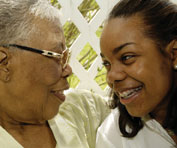"Light" Cigarettes Deliver Heavy Carcinogen Load

New research confirms that smokers who switch to low-tar and low-nicotine brands of cigarettes modify the way they smoke to compensate for the lower nicotine yield, thereby exposing themselves to the same levels of carcinogens they incur smoking higher yield brands. In a comprehensive assessment of biomarkers for tobacco smoke exposure, Dr. Neal Benowitz and colleagues measured carbon monoxide as well as tobacco alkaloids and chemicals representative of two classes of known carcinogens (tobacco-specific nitrosamines and PAHs). This work significantly extends earlier research, which evaluated only levels of carbon monoxide, nicotine, or cotinine. The investigators found that the compensations smokers make to obtain desired nicotine concentrations in their blood, such as smoking more cigarettes per day, or taking deeper puffs, result in no significant reduction in measured carcinogens. Thus, the researchers say, there is no evidence that reduced-yield tobacco should lead to any reduction in the health risks of smoking. Cancer Epidemiology, Biomarkers, and Prevention 14(6):1376-1383,
African-Americans Metabolize Nicotine Slowly
African-Americans who smoke consume fewer cigarettes than their White counterparts. A new study suggests a biological basis for this difference: reduced activity of a liver enzyme cytochrome P450, (2A6) that metabolizes nicotine. As a result, active nicotine metabolites continue to circulate in the blood longer, delaying the smoker's feeling that he or she needs another "hit" on the cigarette.
Dr. Eric Moolchan and colleagues at the NIDA Intramural Research Program measured the byproducts of nicotine breakdown in 92 adolescent smokers (69 percent female, 31 percent African-American, average age 15). The African-Americans consumed fewer cigarettes per day than Whites (15 versus 20). They had higher blood levels of the nicotine byproduct cotinine for each cigarette consumed and lower levels of the cotinine breakdown product trans-3'-hydroxycotinine (3HC). After breaking nicotine down to form cotinine, their bodies evidently took longer with the next step in nicotine metabolism, which is the breakdown of cotinine. Ethnicity and Disease 16(1):239- 243, 2006.
The Brain in Pain
The blood-brain barrier (BBB) is a thin layer of tightly packed cells that line the brain's blood vessels, shielding the organ from harmful chemical intruders while ushering in needed substances such as glucose, the molecular fuel used by all cells. A new study has shown that pain with inflammation alters the proteins that seal the BBB cells together, "loosening" the barrier so that circulating chemicals—including toxins and medications—may more readily enter the brain.
Dr. Tracy Brooks—a postdoctoral fellow in the laboratory of Dr. Thomas P. Davis, professor of medical pharmacology at the University of Arizona—and colleagues demonstrated that rats with swelling and pain in their hindpaws had a 60 percent reduction in the level of key protein components of the BBB, called occludins. These proteins also shifted location, moving from an even distribution along the membrane into a spotty pattern. In contrast, levels of two other key proteins, claudin-3 and claudin-5, dramatically increased. A rise in the level of claudin-3 increases BBB permeability, and the proliferation of claudin-5 is thought to be a compensatory response to "tighten" the barrier. "Our results demonstrate the complexity of the protein makeup of the BBB and that an intricate balance of protein levels and interactions is critical for maintaining the barrier's integrity," says Dr. Brooks. American Journal of Physiology- Heart and Circulatory Physiology 289(2):H738-H743, 2005.
Parents' Actions, More Than Their Words, Influence Kids' Smoking

Researchers looking for family influences on children's smoking have found that actions speak louder than words. As part of a large long-term study of factors that may increase or lower the risk of drug abuse, Dr. Karl Hill and colleagues at the University of Washington surveyed 808 children and their parents annually from age 10 to age 21. Of those who became daily smokers by age 21, the strongest predictive characteristic was having a parent who smoked at the time of the original interview, regardless of the parent's expressed attitude about smoking. The most protective parental characteristics were nonsmoking, clear family rules and monitoring, and strong family bonding. Journal of Adolescent Health 37(3):202-210, 2005.
